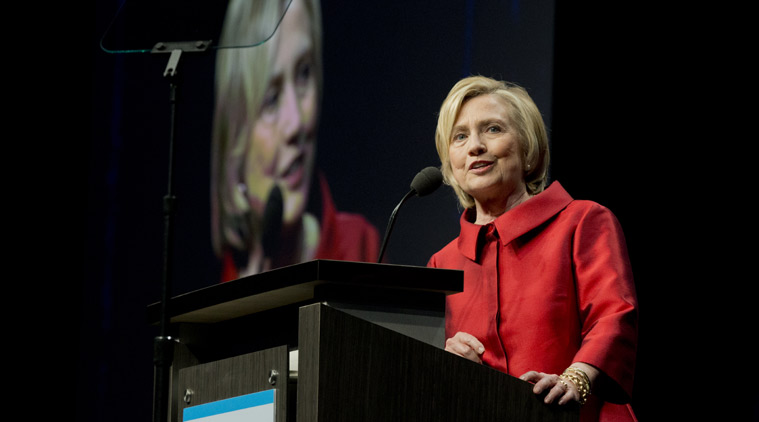Stay updated with the latest - Click here to follow us on Instagram
US State Department releases emails of Hillary Clinton’s correspondence from 2009
Hillary Clinton's emails have become a major issue in her campaign, as Republicans accuse her of using a private account rather than the government address to avoid public scrutiny of her correspondence.
 Hillary Clinton’s emails have become a major issue early in her presidential campaign, as Republicans accuse her of using a private account rather than the standard government address to avoid public scrutiny of her correspondence. (Source: AP)
Hillary Clinton’s emails have become a major issue early in her presidential campaign, as Republicans accuse her of using a private account rather than the standard government address to avoid public scrutiny of her correspondence. (Source: AP)
The State Department has released roughly 3,000 pages of 2016 Democratic presidential candidate Hillary Rodham Clinton’s correspondence from 2009, her first year as the nation’s top diplomat, on Tuesday night.
The emails, covering March through December of that year, were posted online Tuesday evening, as part of a court mandate that the agency release batches of Clinton’s private correspondence from her time as secretary of state every 30 days starting June 30.
[related-post]
Clinton’s emails have become a major issue early in her presidential campaign, as Republicans accuse her of using a private account rather than the standard government address to avoid public scrutiny of her correspondence. As the controversy has continued, Clinton has seen ratings of her character and trustworthiness drop in polling.
The monthly releases all but guarantee a slow drip of revelations from the emails throughout Clinton’s primary campaign, complicating her efforts to put the issue to rest. The goal is for the department to publicly unveil 55,000 pages of her emails by Jan. 29, 2016 — just three days before Iowa caucus-goers will cast the first votes in the Democratic primary contest. Clinton has said she wants the department to release the emails as soon as possible.
“There’s been nothing but nearly nonstop work on this” since the last group of emails was released, State Department spokesman John Kirby told reporters Tuesday at a briefing in which he acknowledged the inconvenient timing. “You have to understand the enormity of the task here. It is a lot of stuff to go through.”
Clinton turned her emails over to the State Department last year, nearly two years after leaving the Obama administration. She has said she got rid of about 30,000 emails she deemed exclusively personal. Only she and perhaps a small circle of advisers know the content of the discarded communications.
Though Clinton has said her home system included “numerous safeguards,” it’s not clear if it used encryption software to communicate securely with government email services. That would have protected her communications from the prying eyes of foreign spies or hackers.
Separately, the State Department on Tuesday provided more than 3,600 pages of documents to the Republican-led House committee investigating the deadly 2012 attacks in Benghazi, Libya, including emails of Susan Rice, the US ambassador to the United Nations at the time, and former Clinton aides Cheryl Mills and Jake Sullivan.
In a letter to the committee, the department said “to the extent the materials produced relate to your inquiry, we do not believe they change the fundamental facts of the attacks on Benghazi.”
Four Americans, including Ambassador Chris Stevens, were killed in the assaults on the diplomatic facility in Benghazi on Sept. 11, 2012. Several investigations have faulted security at the facility, but found that the CIA and military acted properly in responding. One Republican-led House probe asserted no wrongdoing by Obama administration officials in its report last year.
The House committee will hold a public business meeting next week to vote on whether to release the transcript of longtime Clinton confidant Sidney Blumenthal’s deposition. Blumenthal testified behind closed doors for more than eight hours earlier this month, and Democrats have been pressing the panel to release the full transcript.
The committee, led by Republican Rep. Trey Gowdy, has released Blumenthal’s emails with Clinton.





- 01
- 02
- 03
- 04
- 05


























